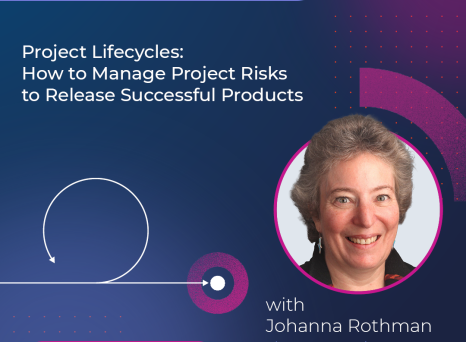Imagine you’re planning to build a new motorway. During one of your busy construction weeks, the weather forecast says to expect sunshine and hot temperatures. For the optimists among you, you may choose to trust this forecast and go ahead with your plan without any additional provisions.
But what if the weather app is wrong?
To ensure your project still goes ahead as scheduled, it’s better to hope for the best and expect the worst. With the right safety training, tools and equipment, and team building activities, you can still go ahead with some of the construction work — even if there’s rain instead of sunshine.
This is what optionality is. It’s the act of keeping your options open, embracing unexpected opportunities, and having a backup plan if things turn sour. And it can be especially useful for your project management efforts.
“The more options we have, the better suited we are to deal with unpredictability and uncertainty. We can stay calm when others panic because we have choices.” — Farnam Street, Preserving Optionality: Preparing for the Unknown
What Does Optionality Look Like in Practice?
Cast your mind back to 2020. You probably remember it as the year of face masks, social distancing, and copious amounts of hand sanitizer.
During this time, many businesses made a collective effort to change their processes or products. For instance, Pfizer pivoted their operations to manufacture cationic lipid — a raw material necessary for COVID vaccines — in-house so that they weren’t reliant on an unpredictable supply chain.
Of course, you needn’t wait for a global pandemic to practice optionality in your business. There are ways to maintain optionality in your everyday project management practices.
How Optionality Works in Project Portfolio Management
Optionality is a fairly broad concept, so let’s drill down into practical instances of optionality in project management.
Here are 9 ways you can implement the optionality philosophy:
1. Adopt a Portfolio Management Approach
This is one of the best ways to achieve optionality in project management. A portfolio approach gives you a high-level, nuanced view of your projects, their dependencies, and how they interconnect. This allows you to better reprioritize your projects if major changes occur or business priorities alter.
2. Hold Off on Project Structuring
When drafting an initial idea or business case, it can be tempting to plan out your project step-by-step. It can help you envision your end goals better and prepare you for the road ahead. However, as time moves on, you may find that your initial plan isn’t fit for purpose and you’ll have to rethink the structure. It’s better to plan the closest phases in detail, and then hold off planning the further phases until you’ve made some progress. That way, you won’t waste time rejigging schedules or booking resources that aren’t needed, should any changes occur.
3. Limit Dependencies
When one part of your project depends on another, you can’t make changes to the second without impacting the first. Naturally, this limits your options in the future.
To mitigate this inflexibility and ensure you follow project management best practices, you should actively track dependencies between projects and assess whether you can reduce their impact or remove them altogether. The fewer dependencies you have, the more space you have for adapting and changing the course of your projects.
4. Identify structure choices
These are the decisions that will condition your options later on in the project. They might involve a choice of technology, a business model, or an approach to solving a problem.
To preserve optionality in this case, you should avoid making structural choices early in the process. Keep the discovery phase as open as possible. That way, if your preferred solution does not work, you have alternative options.
5. Hire People With Diverse Skills Sets
Hiring diverse employees can have a positive impact on your business, with many organizations experiencing increased performance and faster problem-solving.
People with diverse specializations can help you scope out new opportunities or find new ways of delivering projects. For example, if you’re a software development company, you may choose to hire a developer with experience in VR. This will allow you to increase the functionality and compatibility of your software, keep up with the latest trends, and offer new innovative services to your customers.
6. Expand Your Supplier List
You may be perfectly happy with your supplier of choice. But what happens when you can no longer source from them?
Whether it’s new government regulations or port closures, it’s important to have a backup plan in the event of supply chain issues. By expanding your supplier list, you can maintain business as usual should the unexpected happen.
7. Research and Create an Ecosystem Around Your Projects
Instead of sticking to your own bubble of in-house experts and suppliers, forge relationships with those around you.
This might involve speaking with diverse suppliers, as we mentioned previously. It could also involve building a partnership with similar companies in your area or following relevant industry experts and thought leaders on social media.
These relationships will allow you to ingest new ideas and avoid stagnating.
8. Give Your Employees (Some) Free Reign
Nurturing your employees’ interests is good not only for retention, but for maintaining optionality. By giving your teams the time to engage in projects they believe in (as opposed to pre-approved projects only), you can expand your opportunities down the line. This has been particularly successful for companies such as Google, which allow their employees to work on their own projects 20% of the time.
9. Listen to Your Customers
Collecting customer feedback, both positive and negative, can highlight untapped opportunities.
For instance, imagine you’re a product manager within a craft brewery, responsible for spearheading new product development. To help inform your efforts, you send feedback surveys to your customers to better understand their needs. Through this research, you discover a growing demand for alcohol-free drinks.
This suggests a potentially profitable opportunity. By maintaining optionality, you can capitalize on this quickly.
Why It Pays to Keep Your Options Open
“Sunshine is delicious, rain is refreshing, wind braces us up, snow is exhilarating; there is really no such this as bad weather, only different kinds of good weather.” - **John Ruskin, English writer and philosopher**
Throughout the span of your projects, you’ll encounter headwinds and tailwinds, obstructions and windows of opportunities.
Despite your best efforts, it’s impossible to predict the future. That’s why optionality is so important. By keeping your options open, you can respond quickly to unforeseen events and grasp new opportunities before your competitors do.
This ensures your projects run smoothly, your market position stays steady, and your customers remain happy.


